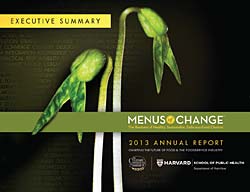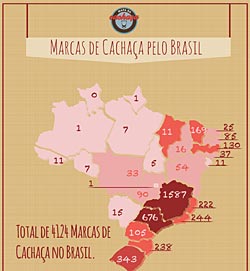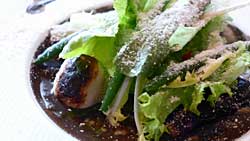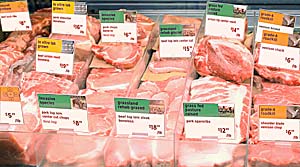Seeds of Disruption
How technology is remaking the future of food
Forecast Perspective: Sustainability | Outsourcing Intent
Food production keeps pace with other aspects of sustainability

In the next decade, sustainable food production will be fueled by the passion and creativity of chefs from whom people get more and more of their food and their meal ideas—directly from restaurants or indirectly from the ready-to-eat sections of retailers and from cooking lessons on television. Local, fresh, and flavorful will be the hallmarks of foods that sneak health and sustainability in under the guise of taste. Reassured by an increasingly transparent and hyper-local system of food production, consumers’ sense of responsibility for choosing sustainable food will shift toward mindful consumption and waste reduction.
Jump to:
Eating in this Future
Global Signals
Insights
Artifact from the Future
Download
EATING IN THIS FUTURE
- In North America, South Asia, and even Africa, net-zero-energy and carbon farming are pioneered both in urban vertical farms such as The Plant in Chicago and through energy- and biochar-generating farm equipment in rural areas. Dense aquaponics systems and no-till production create serious leaps in the productivity and reach of agroecological approaches.
- Chefs around the world take up the banner of the plant-based diet, attempting to create a cosmopolitan culinary culture that moves meat off the center of the plate.
- Consumers latch onto whatever promises sustainable protein—whether it be chowing down on invasive species or dining on herds used to rehabilitate ailing grasslands. More types of fish from more resilient fisheries vie for consumer approval.
- Where natural and sustainable were once intricately correlated, this relationship changes in a fundamental way as we develop tech-heavy ways of producing and processing food (for instance, lab-grown meat) that are more sustainable than traditional methods in pure carbon-footprint terms.
- Critics within and outside of established sustainable-food circles raise concerns that overreliance on heavily processed but sustainability-correct foods could reduce mindfulness about food production and consumption, and create a more fragile food ecosystem.
- Smart packaging and home flash-freezing technologies give consumers more direct means of assuring the safety of their food than relying on expiration dates, freeing them up to swap, save, and repurpose more of their food that might have been wasted.
GLOBAL SIGNALS
United States
 Enlisting food services in efforts to redefine and implement sustainability
Enlisting food services in efforts to redefine and implement sustainability
Recognizing that chefs prepare more than half of the meals consumed in the United States, the Culinary Institute of America has partnered with the Harvard School of Public Health on the Menus of Change Effort to begin defining a long-term vision for preparing and serving sustainable food and collaborating on turning this vision into action. Efforts like this will not only integrate sustainable sourcing into food preparation but will also expand the definition of what is understood to be sustainable.
Source: Menus of Change
Brazil
 Mapping to create new kinds of transparent, sustainable supply chains
Mapping to create new kinds of transparent, sustainable supply chains
As environmental consciousness grows across all classes in Brazil, an emerging movement of culinary eco-connoisseurs is taking pride in knowing all the details of the supply chain behind their diets. For example, on the site Mapa da Cachaça, consumers can find locations and read stories of artisanal distilleries and learn about their production techniques and commitments to sustainability. As grassroots efforts that combine transparency and sustainability gain traction, they will reshape the type and volume of information that consumers expect to have about their food.
Source: Mapa da Cachaça
Japan
 Recycling food waste into sustainable gourmet compost
Recycling food waste into sustainable gourmet compost
Ne Quittez Pas, an infamous, high-end “dirt restaurant” in Japan serves dishes that feature dirt as a primary ingredient. The controversial ingredient is sourced from a company called ProtoLeaf, which uses coffee grinds and palm fiber, which were previously just thrown away, to create a sustainable, and edible, compost. While the restaurant caters to adventurous gourmets, the practice of recycling food waste and making it edible represents a new take on sustainability that could be available to the average consumer in a decade.
Source: Ne Quittez Pas
INSIGHTS
Food services close the gap between intent and behavior
For the better part of a decade, consumer surveys have shown a gap between people’s stated values around green options and their actions. A wide spectrum of gastronomical professionals are poised to become new trusted authorities in how to translate values into behaviors. Building on the way that standardized nutrition labels have found their way onto store shelves, new labels and other metrics will increasingly shape what people choose to consume when buying both fresh and prepared foods.
Transparency becomes expected, even when it is ignored
While many consumers will look to trusted sources to help them make more sustainable food choices, they will still want to know they can access sustainability data even if they choose not to look at it. As a result, openness to being scrutinized by consumers will form a key component of longer-term sustainability initiatives.
Definitions of sustainable expand and become diverse
For many years now, the majority of consumers have largely shared a common definition of what sustainability means. However, new techniques are emerging: heavily processing and bioengineering foods to reduce their carbon footprint; consumption practices that actively better the environment, such as eating only invasive species; and reducing food waste by finding new ways to make it edible. With this proliferation of new ways to be sustainable, the “green eater” demographic will segment in radical new ways.
ARTIFACT FROM THE FUTURE
New Metrics at the Butcher
 What: As you stare at the butcher’s case, you can’t help but think about how much you’d really like that grass-fed, pasture-raised beef, but you know your partner isn’t having it—not nearly sustainable enough. You’d settle for lab-grown, but that just isn’t natural enough for him. You can’t, for the life of you, understand how it’s somehow more natural to eat something that got hit by a bus, but road-kill meat is his preference. And with the upscale, eco-conscious crowd at West Oakland Community Market, it’s always in demand.
What: As you stare at the butcher’s case, you can’t help but think about how much you’d really like that grass-fed, pasture-raised beef, but you know your partner isn’t having it—not nearly sustainable enough. You’d settle for lab-grown, but that just isn’t natural enough for him. You can’t, for the life of you, understand how it’s somehow more natural to eat something that got hit by a bus, but road-kill meat is his preference. And with the upscale, eco-conscious crowd at West Oakland Community Market, it’s always in demand.
So What: Concepts such as carbon footprints and food miles, humane treatment of animals, ecosystems management, and waste reduction are all big concerns for eaters today. However, as our ability to take all of these to the extreme increases, we’ll see the tradeoffs and choices become more dramatic, creating diverse new sustainability standards. While eating road-kill and invasive species are, today, fringe behaviors, in a decade, they could become commonplace.